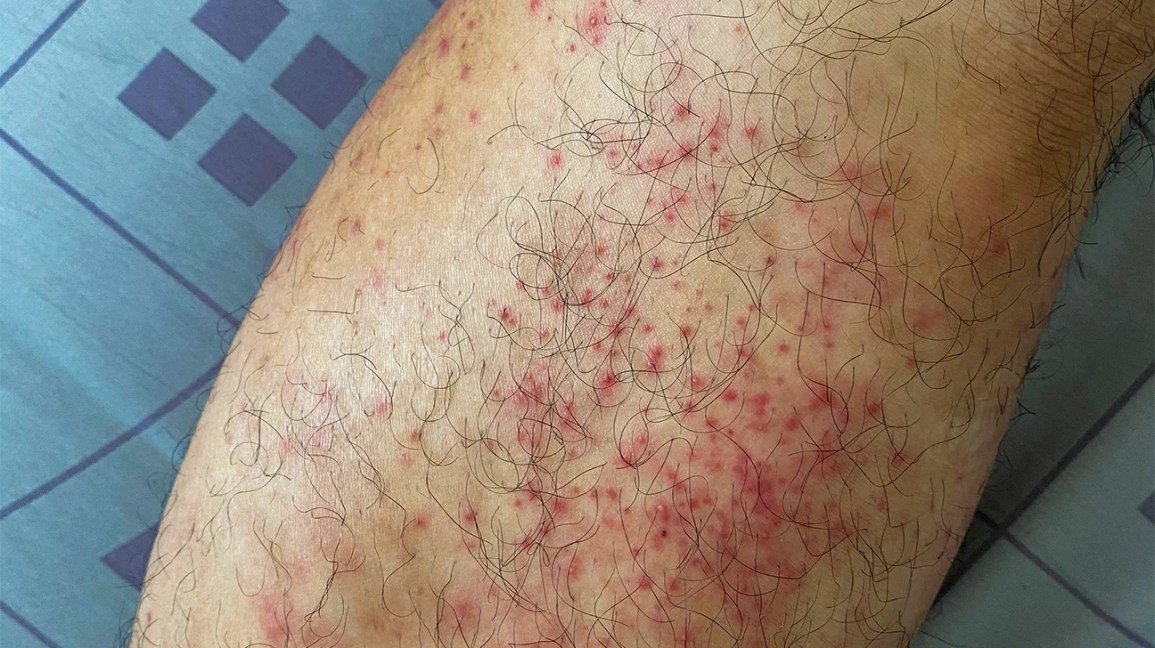Pictures of Hives (Urticaria) to Help Identify a Skin Rash

Understanding Hives (Urticaria): A Comprehensive Guide
Hives, medically known as urticaria, are characterized by raised, red, and itchy welts on the skin. These skin reactions can vary in size, shape, and severity, appearing anywhere on the body. Recognizing hives through images and understanding their causes can help you identify and manage this condition effectively. Triggers range from allergies and infections to stress, environmental factors, or even unknown causes (idiopathic). Hives can be acute (short-term) or chronic (long-lasting) and may affect individuals of all ages.
What Causes Hives?
Hives develop due to a variety of triggers, which can be broadly categorized into allergic and non-allergic causes. Common culprits include:
- Allergic Reactions: Foods (e.g., nuts, shellfish), medications, pet dander, pollen, or latex.
- Infections: Viral, bacterial, or fungal infections can prompt hives.
- Environmental Factors: Exposure to heat, cold, water, sunlight, or pressure on the skin.
- Stress and Exercise: Emotional stress or physical exertion may induce hives in some cases.
- Idiopathic Origins: In many instances, the exact cause remains unidentified.
Hives can appear suddenly as an acute episode or persist as a chronic condition, with symptoms ranging from localized patches to widespread outbreaks.
Recognizing Symptoms of Hives
The hallmark signs of hives are easy to spot but can vary in intensity. Key symptoms include:
- Raised, red, or skin-colored welts that may change shape or size.
- Intense itching, sometimes accompanied by a burning sensation.
- Swelling in affected areas, known as angioedema, especially around the face or throat.
- Skin discoloration, though redness may be less visible on darker skin tones.
- Rarely, mild pain or discomfort in the affected areas.
Hives are not contagious, but underlying triggers like infections may be. In severe cases, hives may signal a life-threatening allergic reaction called anaphylaxis, requiring immediate medical attention.
When to Seek Emergency Care
Call 911 or visit an emergency room if you experience:
- Sudden, widespread hives or rash.
- Difficulty breathing or wheezing.
- Swelling of the face, lips, tongue, or throat.
- Dizziness, fainting, or irregular heartbeat.
- A sense of impending doom.
These symptoms may indicate anaphylaxis, a medical emergency.
Types of Hives: Acute vs. Chronic
Hives are classified based on their duration and underlying causes. Understanding the type of hives is crucial for effective management.
Acute Hives
Acute hives typically resolve within days to six weeks and are often triggered by:
- Allergic reactions to food, drugs, or environmental allergens.
- Infections, such as the common cold or other viral illnesses.
- Contact with irritants like chemicals or plants.
These hives may be generalized (affecting the entire body) or localized (confined to one area). They often appear spongy due to fluid buildup beneath the skin, caused by histamine release during an immune response.
Chronic Hives
Chronic hives persist beyond six weeks or recur frequently over months or years. They are often less spongy, with well-defined borders, and may be triggered by:
- Physical Stimuli: Heat (cholinergic urticaria), cold, pressure, water (aquagenic urticaria), sunlight, or vibrations.
- Autoimmune Conditions: Disorders like lupus or thyroid disease.
- Idiopathic Causes: Up to 90% of chronic hives cases have no identifiable trigger.
Chronic hives can significantly impact quality of life, requiring ongoing management.
Special Case: Dermatographic Hives
Dermatographism, a form of pressure urticaria, occurs when the skin is scratched or rubbed, forming welts along the lines of contact. This condition, sometimes called “skin writing,” is caused by mast cells releasing histamine in response to physical trauma. Symptoms are typically mild, resolving within 15–30 minutes, though severe cases may last hours. Treatment is rarely needed, but avoiding skin irritation is key.
Diagnosing Hives
Diagnosing hives involves a thorough evaluation of symptoms and potential triggers. Healthcare providers may:
- Review your medical history, recent infections, or medication use.
- Ask about lifestyle changes, environmental exposures, or family history of hives.
- Conduct allergy tests to identify specific allergens.
- Assess the timing, location, and severity of symptoms.
In chronic cases, autoimmune responses may be investigated, as up to 30% of chronic urticaria cases are linked to conditions like asthma, eczema, or hay fever. Despite extensive testing, the cause of hives may remain elusive.
Treatment Options for Hives
Treatment for hives depends on their type, severity, and underlying cause. The goal is to relieve symptoms and prevent recurrence.
Managing Acute Hives
Acute hives are often treated with over-the-counter (OTC) second-generation H1 antihistamines, which reduce itching and swelling. Common options include:
- Fexofenadine (Allegra)
- Loratadine (Claritin)
- Cetirizine (Zyrtec)
- Levocetirizine (Xyzal)
For severe cases or nighttime symptoms, first-generation antihistamines like diphenhydramine (Benadryl) may be prescribed, though they can cause drowsiness.
Treating Chronic Hives
Chronic hives may require a combination of treatments, including:
- OTC antihistamines for daily symptom control.
- H2 blockers like famotidine (Pepcid) to enhance relief.
- Oral corticosteroids (e.g., prednisone) for short-term use in severe cases.
- Biologics like omalizumab (Xolair) for persistent symptoms.
- Emerging therapies, such as dupilumab or IL-17 inhibitors, showing promise in clinical trials.
Lifestyle adjustments, such as avoiding known triggers (e.g., tight clothing, extreme temperatures), can also help manage chronic hives.
Visualizing Hives: A Note on Images
Images of hives can aid in identification but may be graphic or unsettling for some viewers. Photos typically show raised, red welts with defined edges, varying in size and distribution. For accurate visuals, consult reputable medical sources like DermNet or healthcare providers. Always seek professional advice for diagnosis rather than relying solely on images.
Conclusion: Taking Control of Hives
Hives, whether acute or chronic, can be distressing but are manageable with the right approach. By understanding their triggers, symptoms, and treatment options, you can work with healthcare providers to find relief. If hives appear suddenly, persist, or are accompanied by severe symptoms, seek medical attention promptly. With proper care, most cases of hives can be effectively controlled, allowing you to regain comfort and confidence.
Frequently Asked Questions
⭐ Expert Tips
- Include seasonal or trendy variations to keep your meals exciting.
- Highlight prep shortcuts or time-saving techniques for busy cooks.
- Consider dietary restrictions and include substitution suggestions.
✅ Key Takeaways
- These dinner ideas are perfect for impressing guests or enjoying special occasions.
- Choose recipes that match your skill level and available kitchen tools.
- Presentation and taste both contribute to a memorable dining experience.
📣 Join Our Community
Want more inspiration like this? Subscribe to our newsletter for weekly dinner ideas and cooking tips!




